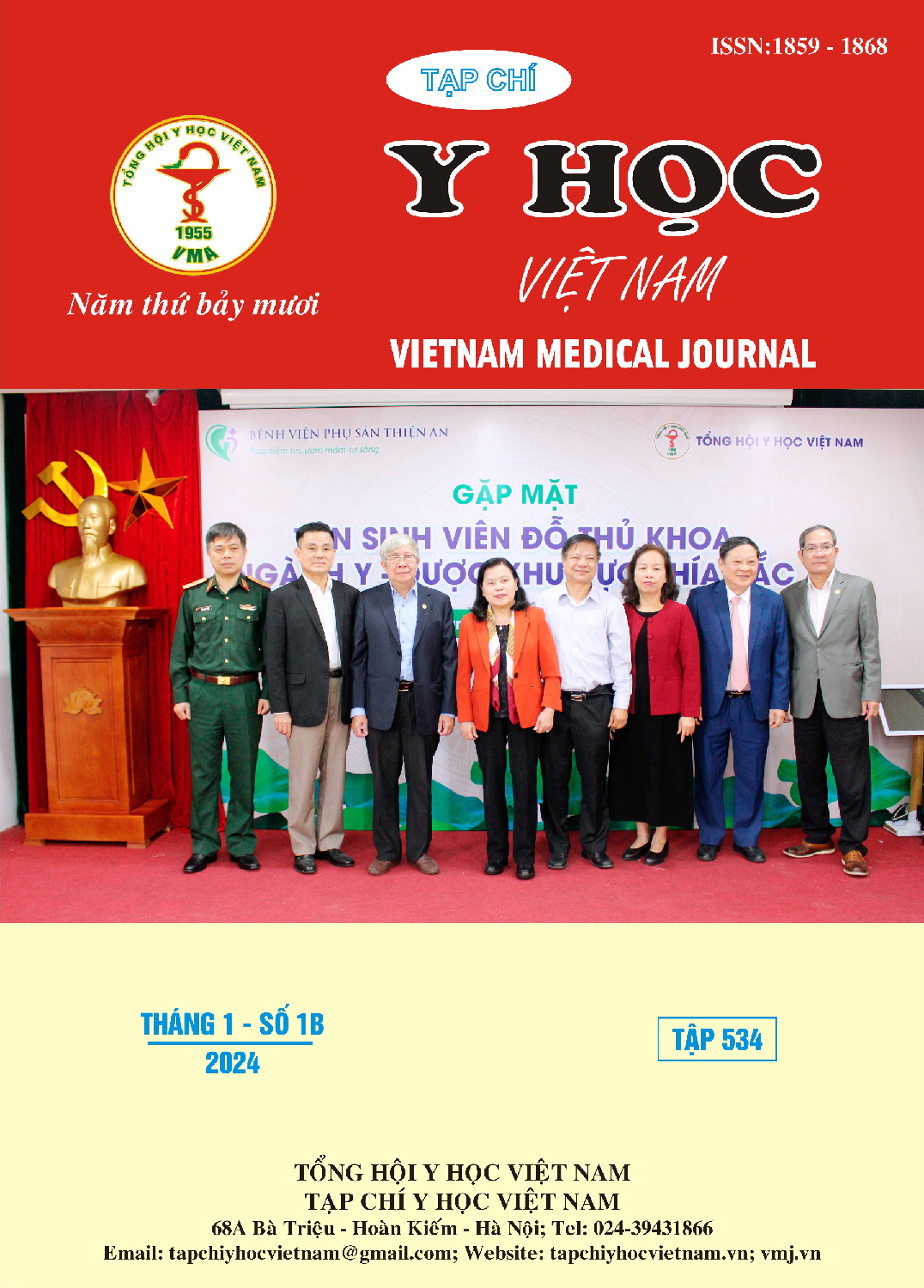CLINICAL FEATURES OF MULTISYSTEM INFLAMMATORY SYNDROME IN CHILDREN AT THE INTENSIVE CARE UNIT, VIETNAM NATIONAL CHILDREN'S HOSPITAL
Main Article Content
Abstract
Objective: Describe the clinical and paraclinical characteristics of Multisystem Inflammatory Syndrome in Children at the Intensive Care Unit - Vietnam National Children's Hospital. Subjects and methods: A retrospective descriptive study of a series of cases included 280 patients from 1 month to 17 years old diagnosed with MIS-C and treated at the Intensive Care Unit - National Children's Hospital from 01/01/2022 to 31/09/2023. Results: From analyzing 280 pediatric patients with MIS-C, the study showed that the median age was 7 years. The male ratio was 1.5 times higher than the female. Most of them were seen in healthy children who were infected with SARS-CoV-2 and appeared from 1-3 months after infection. All patients had a high fever (100%). Significant clinical symptoms were rash 77% and conjunctivitis 74.2%. Abdominal pain (43,2%), nausea/vomiting (43.9%), and cough (44,6%). Lymphadenopathy (44.6%). Main subclinical signs: Hyperinflamatory makers: neutrophil increasing (58.9%), CRP (100%), procalcitonin (88.1%), IL-6 (89.5%), ferritin (77.9%). Increasing of D-dimer (100%) and fibrinogen (53.2%). Lymphopenia (51%), hypoalbumin (53%), and improved cardiac enzymes (pro-BNP 76%). Abnormal on echocardiogram was 32.1%. The Shock form was seen at 53,5%. Outcome with high discharge and low mortality rate (0,8%). Conclusion: Multisystem inflammatory syndrome associated with SARS-CoV-2 in children (MIS-C) seen in 2-10 years old. The disease appeared 1 to 3 months after infection with the SARS-CoV-2 virus. Significant symptoms included high fever, skin and mucous membrane injury, and digestive symptoms. Predominant paraclinical signs include increased inflammatory markers, hypercoagulation, hypoalbuminia, and lymphocytopenia. The main clinical form was shock. The disease had a low mortality rate.
Article Details
References
2. Payne AB, Gilani Z, Godfred-Cato S, et al. Incidence of Multisystem Inflammatory Syndrome in Children Among US Persons Infected With SARS-CoV-2. JAMA Netw Open. 2021;4(6): e2116420. doi:10.1001/ jamanetworkopen.2021. 16420
3. Son MBF, Murray N, Friedman K, et al. Multisystem Inflammatory Syndrome in Children — Initial Therapy and Outcomes. N Engl J Med. 2021;385(1):23-34. doi:10.1056/NEJMoa2102605
4. Sacco K, Castagnoli R, Vakkilainen S, et al. Immunopathological signatures multisystem inflammatory syndrome in children and pediatric COVID-19. Nat Med. 2022;28(5):1050-1062. doi:10.1038/s41591-022-01724-3
5. Mônica O. Santosa. Multisystem inflammatory syndrome (MIS-C): a systematic review and meta-analysis of clinical characteristics, treatment, and outcomes. It was accessed on December 25, 2023. https://www. jped.com.br/ en-pdf-S0021755721001480
6. Belay ED, Abrams J, Oster ME, et al. Trends in Geographic and Temporal Distribution of US Children With Multisystem Inflammatory Syndrome During the COVID-19 Pandemic. JAMA Pediatr. 2021;175(8): 837-845. doi:10.1001/ jamapediatrics.2021.0630
7. Hướng dẫn chẩn đoán và điều trị COVID-19 ở trẻ em (2022).
8. Ninh Quốc Đạt, Trần Văn Trung (2023) Đặc điểm hội chứng viêm đa cơ quan liên quan COVID-19 ở trẻ em tại Bệnh viện Đa khoa Xanh Pôn. Tạp chí Nghiên cứu y học 167(6) 204-211.


